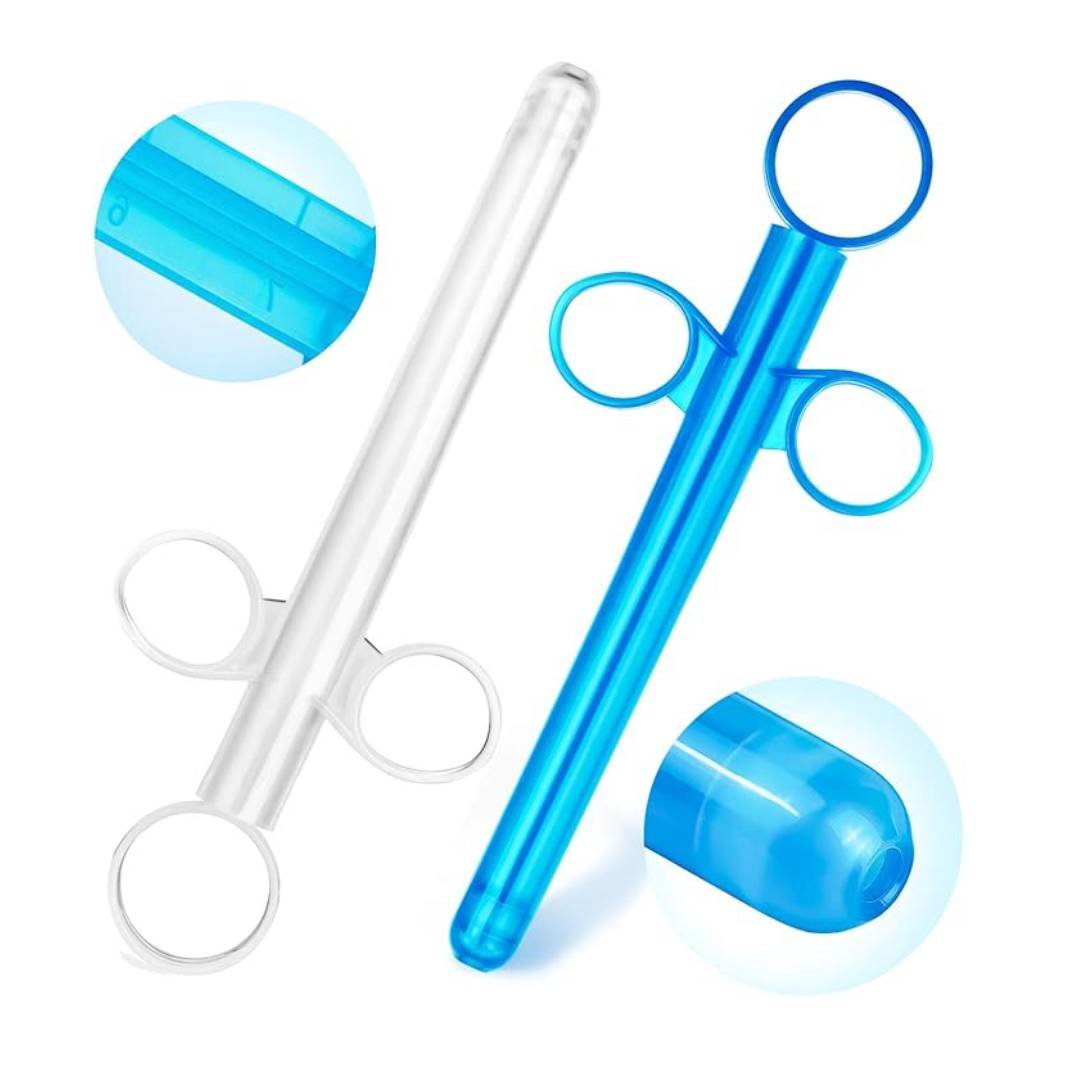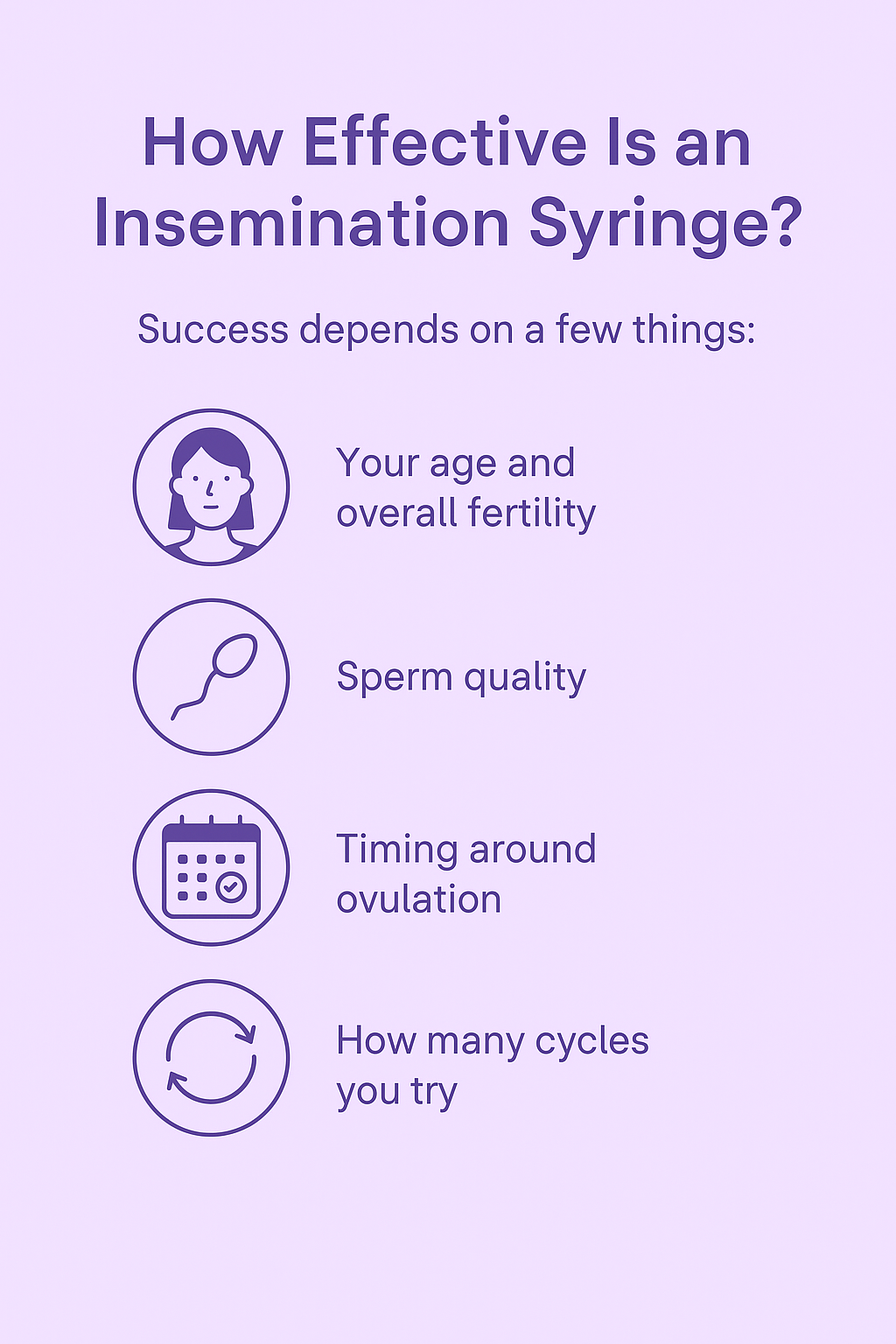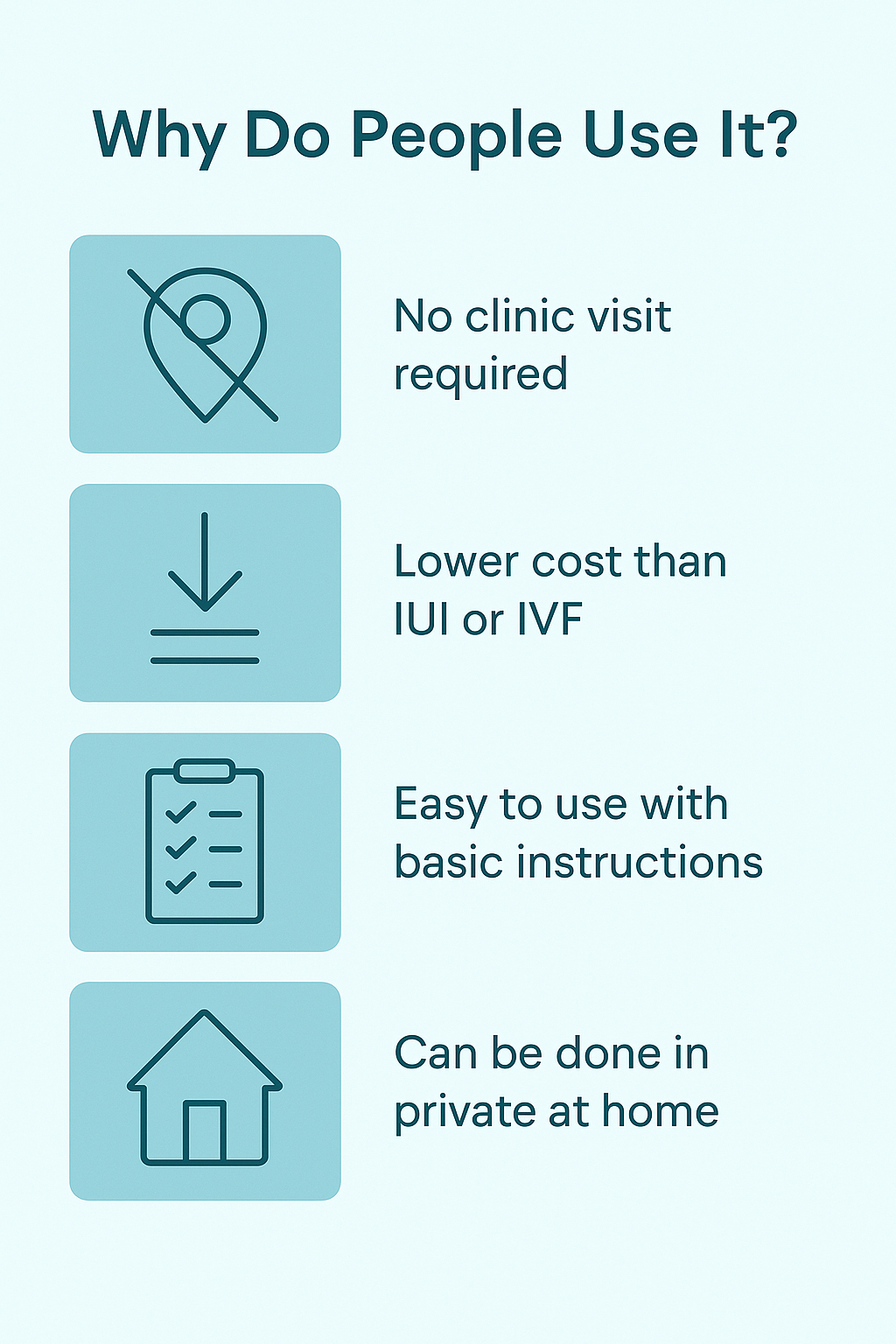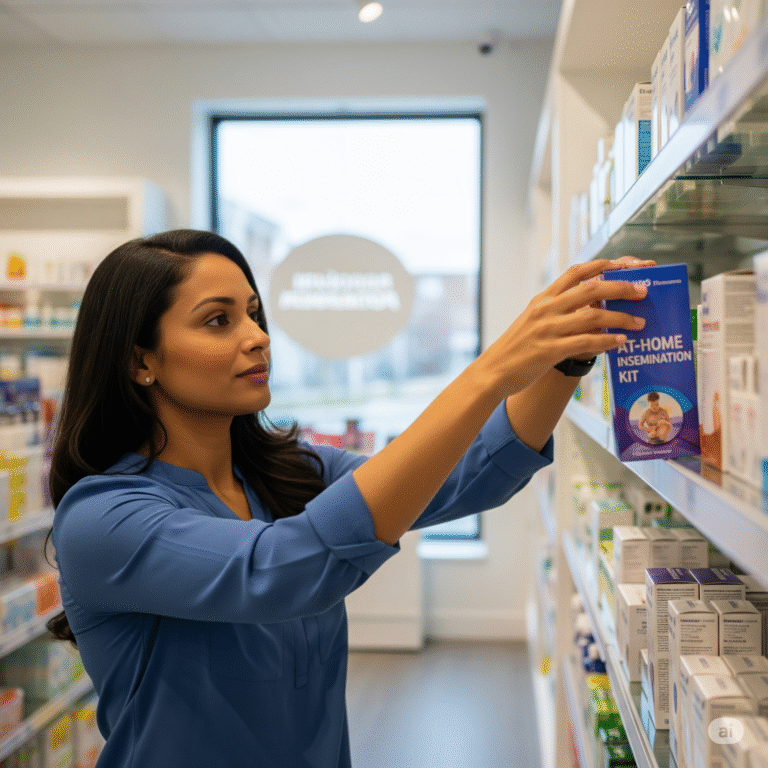Insemination Syringe: What It Is and Why People Use It
 The insemination syringe is one of the most common tools used for at-home insemination. It’s simple, safe, and widely available. Unlike a needle syringe, it doesn’t pierce the skin. Instead, it’s used to gently place semen near the cervix during the fertile window.
The insemination syringe is one of the most common tools used for at-home insemination. It’s simple, safe, and widely available. Unlike a needle syringe, it doesn’t pierce the skin. Instead, it’s used to gently place semen near the cervix during the fertile window.
People who search for insemination syringe options often want a low-cost, private method for getting pregnant. This can include single women, lesbian couples, and couples dealing with male fertility issues. Here’s how it works and what you need to know.
 What Is an Insemination Syringe?
What Is an Insemination Syringe?
An insemination syringe is a sterile, needleless syringe used to insert semen into the vaginal canal, usually as close to the cervix as possible. The goal is to help sperm reach the egg during ovulation.
Common features:
Holds 3 to 10 milliliters of fluid
Made of medical-grade plastic
Has a smooth plunger for easy use
Usually has a rounded tip (no needle)
It works by drawing semen into the barrel, inserting the syringe into the vagina, and slowly pressing the plunger to release the sample.
For some, it’s used with donor sperm from a partner or known donor. For others, it’s part of a more structured home insemination plan.
Types of Insemination Syringes
Not all syringes are the same. These are the most common types:
Oral or needleless syringes
These are small and easy to find at pharmacies. Often used for baby medicine, but work well for insemination if clean and sterile.Catheter-tipped syringes
Slightly longer, with a soft tip. Some people prefer them for deeper insertion.Fertility-brand syringes (like Mosie Baby)
Designed for insemination. More expensive but made for comfort and ease of use.DIY kits
Budget-friendly kits include two syringes and ten specimen cups. These work just as well as branded options when used properly.
You can find a cheap DIY insemination syringe kit in the Home Insemination Guide, which includes 2 syringes and 10 sample cups for under $20.
What to Look For
When shopping for an insemination syringe, check for:
Sterile packaging
No rubber tips or tight seals that trap semen
Smooth plunger action
Barrel size between 3 and 10 mL
Some people prefer a longer tip, while others feel more comfortable with a shorter one. The most important thing is that it’s clean, smooth, and easy to use.
How to Use an Insemination Syringe at Home

Using an insemination syringe at home is simple once you know the steps. Many people choose this method because it gives them privacy and control. It doesn’t require a doctor, and when done right, it can help you get pregnant without the cost of a clinic.
Here’s how it works.
Step-by-Step Instructions
Follow these steps to use an insemination syringe safely and correctly:
Wash your hands
Clean hands prevent infection.Prepare your tools
You’ll need a sterile syringe and a clean sample cup. If you’re using a kit, it should already be ready to go.Collect the semen
Use a sterile container. If it’s from a partner, have them ejaculate directly into the cup. If using donor sperm, follow thawing instructions carefully.Wait 15 to 30 minutes
Let the semen sit at room temperature until it becomes liquid. This is called liquefaction. It helps sperm move better.Draw semen into the syringe
Pull the plunger slowly so air doesn’t get trapped. Tap gently to remove any bubbles.Insert the syringe into the vagina
Lie on your back with hips raised. Gently insert the syringe and press the plunger slowly to release the semen.Stay lying down for 15 to 20 minutes
This gives the sperm time to swim toward the cervix.
Best Timing for Insemination
Timing is everything. For the best chance of success, inseminate when you’re most fertile. This is usually around ovulation, which happens about 14 days before your next period.

Positioning Matters
The right position helps semen stay near the cervix. Here are a few tips:
Lie flat on your back
Place a pillow under your hips
Stay still for 15 to 20 minutes after inserting the sample
Some people also use a menstrual cup after insemination to hold sperm in place longer, but it’s not required.
Common Mistakes to Avoid
Using an insemination syringe is easy, but there are a few things that can lower your chances if not done right:
Using an old or dirty syringe
Always use a new, sterile one for each try.Not letting semen liquefy
If you rush this step, sperm may not move well.Using the wrong type of lubricant
Many store-bought lubes kill sperm. Only use fertility-safe options or none at all.Inseminating too early or too late
Use ovulation tracking tools to time it correctly.
Safety, Effectiveness, and Research on Insemination Syringes

Many people wonder if using an insemination syringe at home is safe or if it actually works. The answer is yes—when used the right way, it’s both safe and effective for many people. It’s not the right choice for everyone, but for many, it’s a simple option that can lead to pregnancy without needing a clinic.
Here’s what you need to know.
Is It Safe to Use an Insemination Syringe at Home?
Yes. As long as the syringe is sterile and you follow clean steps, home insemination is safe. You’re not putting anything into the uterus—just near the cervix—so the risk is low.
To stay safe:
Always use a new or properly sterilized syringe
Wash your hands before starting
Don’t insert the syringe too deeply
Stop if you feel pain
Home insemination is much less invasive than procedures like IUI or IVF. There are no hormones, needles, or clinic visits involved unless you choose to add them later.

Many people don’t get pregnant on the first try. But with good timing and healthy sperm, home insemination with a syringe can work within a few cycles.
In general:
Women under 35 have a higher success rate
People often try 3 to 6 cycles before switching methods
Pregnancy is most likely when done during the LH surge
Clinic vs. Home Insemination

There are pros and cons to both.
Home with a syringe:
Private and less stressful
Costs less (especially with a DIY kit)
Easy to do without medical staff
Clinic IUI:
Doctor controls timing
Sperm placed directly in the uterus
Higher success rate in some cases, but more costly
Many people try insemination at home first, then move to a clinic if it doesn’t work after a few tries.
Research on Home Insemination Success
Several studies support the use of insemination syringes at home. Here are three that show it can be safe and effective:
Results of artificial insemination at home by the partner with cryopreserved donor semen: a randomized study
This study found similar pregnancy rates between home and clinic insemination using frozen sperm.Pregnancy Outcome of Home Intravaginal Insemination in Couples with Unconsummated Marriage
Home insemination led to a 69% success rate in women under 33 after six cycles.Use of home insemination in programmes of artificial insemination with donor semen
This older study showed high patient satisfaction and safe results using home insemination methods.
Where to Buy an Insemination Syringe and What to Look For

After learning how to use an insemination syringe safely and effectively, the next step is getting the right one. You don’t need an expensive brand-name kit to get results. Many people use affordable, basic tools at home with success.
This section shows where to buy syringes, how to choose one, and whether specialty brands are worth the extra cost.
Where to Buy an Insemination Syringe
You can buy an insemination syringe in several places:
Online: Many people order from fertility-branded companies like Mosie Baby. Their kits cost around $129 and include 2 syringes and 2 collection cups.
Local pharmacy: Some stores carry sterile oral syringes near the baby care section.
DIY kits: The Home Insemination Guide includes a low-cost kit with 2 syringes and 2 sterile sample cups for under $20.
What to Look For in a Syringe
Not all syringes are made the same. Here’s what to check:
Sterile packaging: Must be sealed and clean
No needle: Only use syringes designed for oral or vaginal use
Smooth plunger: Helps control how fast the semen is released
Proper size: 3–10 mL is ideal for insemination
No rubber stoppers: These can trap semen
Some syringes come with a longer tip or a soft catheter-style extension. These may help get closer to the cervix but aren’t required.
Are Fertility Brands Better?
There are branded syringes made for home insemination, like Mosie Baby. They offer features like curved barrels or comfort grips, and they cost about $129. These extras may feel nice, but there’s no solid evidence showing they work better than a regular sterile syringe.
The most important part of insemination is getting the sperm close to the cervix during the fertile window. A clean, standard oral syringe can do that just as well when used correctly.
How Many Should You Buy?
Most people use one syringe per cycle
Many kits come with two syringes, which is helpful if you want to try inseminating on back-to-back days
If reusing, you must sterilize the syringe with boiling water—but single use is safest
FAQ
Can I reuse an insemination syringe?
Yes, but only if you sterilize it properly. It’s safest to use a new one each time.
How soon after ejaculation should I inseminate?
Wait 15–30 minutes for semen to liquefy. Use it within one hour for best results.
Do I need a special syringe for insemination?
No. A clean, needleless oral syringe works fine. Just avoid rubber-tipped or hard-to-clean designs.
How do I know I’m using it right?
Follow timing instructions, keep tools sterile, and stay lying down for 15–20 minutes afterward.
Where can I get a cheap syringe kit?
You can find a DIY kit with two syringes and two cups in the Home Insemination Guide for less than $20.

